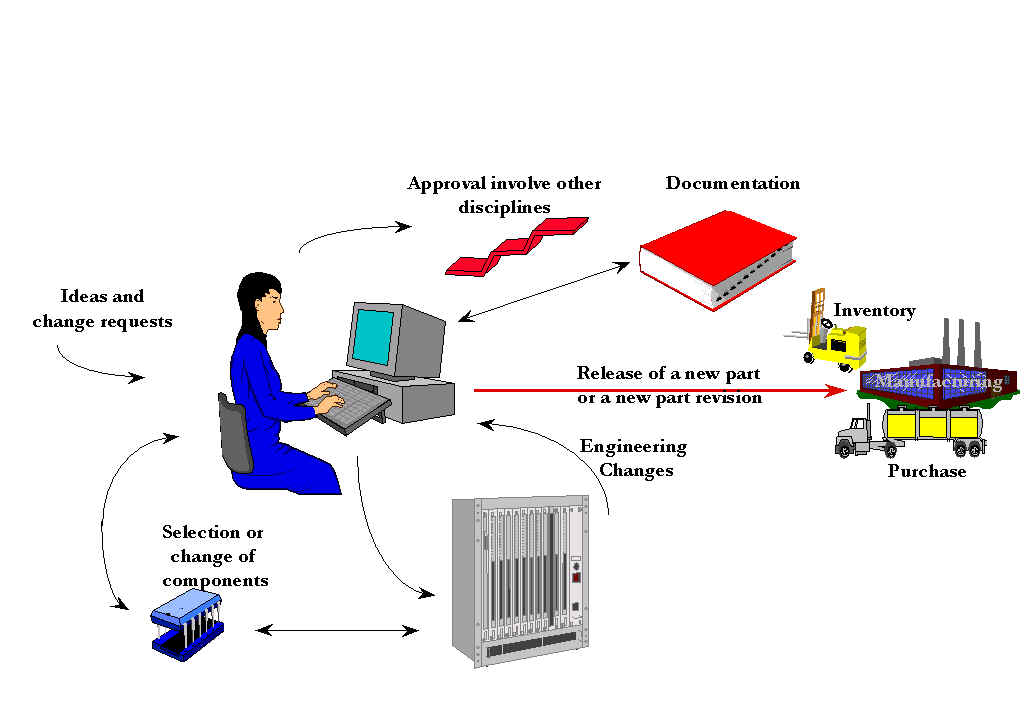
This help file covers these topics:
IFS/PDM-Configuration makes everyone’s work available - in a controlled manner - to other people in the organization. Everyone sees the same information about product structures, part cost, status, documentation, etc., and spends minimum time searching for it.
By using approval routings for parts and documents, you can involve other disciplines/departments in reviewing your work at an early stage. This should lead to design or configuration changes early in the process, well before you reach the point of no return.
IFS/PDM-Configuration is designed to keep the engineer from performing the same work more than once. This design is attained through functionality that allows for the standardization and reuse of parts and documents.
IFS/PDM-Configuration supports a product configuration throughout its lifetime. When modifications are done to the original configuration and design, this module keeps track of parts, product structures, specifications, and documents for all product revisions.
PDM Configuration is divided into two main parts, but there are no distinct boundaries or dividing lines. The bisection is merely a way of describing different ways of using the module. Below is a description of important functions in the system. The list is organized sequentially according to the navigator.
Products and Models
Complete product and product model catalog.
Functions
Engineering Part
Engineering Part Revisions
This is the cornerstone of the module where information about engineering part revisions is stored.
Product Structure
Parts can be organized as a hierarchical product structure in which several powerful utilities can provide:
Characteristics
Change Management